GLP-1 Supply Tracker
Stay up-to-date on where GLP-1s are in shortage ⚡ and where folks are having success finding them 🙌
Let’s help each other track and find GLP-1 supply.
Need supply?
We'll let you know when supply is found nearby and notify the FDA about the shortage.
Found supply?
Share with us and we’ll notify patients nearby.
GLP-1 Shortage Status
See the shortage status of GLP-1s according to the FDA and how it compares against community reports.
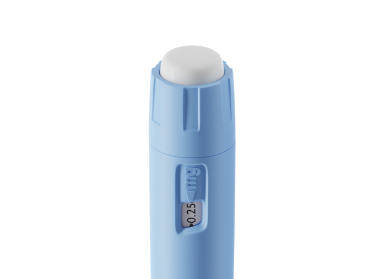
Ozempic
Shortage resolved
Available😒
.68 mg/1 mL
⚡ 9 recent reports
Shortage resolved according to the FDA but we're receiving reports of supply issues.
Available😒
1.34 mg/1 mL
⚡ 3 recent reports
Shortage resolved according to the FDA but we're receiving reports of supply issues.
Available😒
2.68 mg/1 mL
⚡ 8 recent reports
Shortage resolved according to the FDA but we're receiving reports of supply issues.
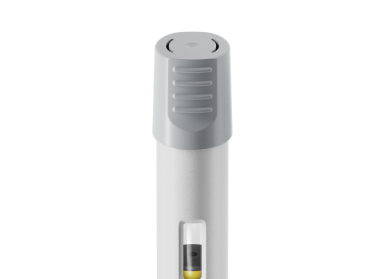
Wegovy
Shortage resolved
Available😒
0.25 mg/0.5 mL
⚡ 16 recent reports
Shortage resolved according to the FDA but we're receiving reports of supply issues.
Available😒
0.5 mg/0.5 mL
⚡ 4 recent reports
Shortage resolved according to the FDA but we're receiving reports of supply issues.
Available😒
1 mg/0.5 mL
⚡ 3 recent reports
Shortage resolved according to the FDA but we're receiving reports of supply issues.
Available😒
1.7 mg/0.75 mL
⚡ 1 recent report
Shortage resolved according to the FDA but we're receiving reports of supply issues.
Available😒
2.4 mg/.75 mL
⚡ 8 recent reports
Shortage resolved according to the FDA but we're receiving reports of supply issues.
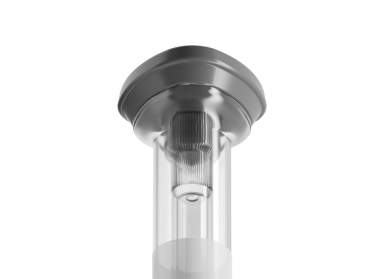
Mounjaro
Shortage resolved
Available😒
2.5 mg/.5 mL
⚡ 3 recent reports
Shortage resolved according to the FDA but we're receiving reports of supply issues.
Available😒
5 mg/.5 mL
⚡ 2 recent reports
Shortage resolved according to the FDA but we're receiving reports of supply issues.
Available😒
7.5 mg/0.5 mL
⚡ 3 recent reports
Shortage resolved according to the FDA but we're receiving reports of supply issues.
Available😒
10 mg/0.5 mL
⚡ 3 recent reports
Shortage resolved according to the FDA but we're receiving reports of supply issues.
Available😒
12.5 mg/0.5 mL
⚡ 2 recent reports
Shortage resolved according to the FDA but we're receiving reports of supply issues.
Available😒
15 mg/0.5 mL
⚡ 1 recent report
Shortage resolved according to the FDA but we're receiving reports of supply issues.
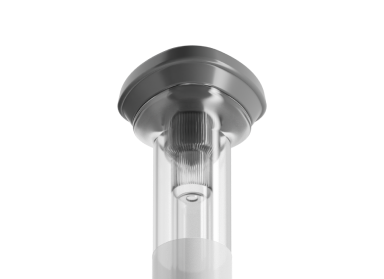
Zepbound
Shortage resolved
Available😒
2.5 mg/.5 mL
⚡ 22 recent reports
Shortage resolved according to the FDA but we're receiving reports of supply issues.
Available😒
5 mg/0.5 mL
⚡ 8 recent reports
Shortage resolved according to the FDA but we're receiving reports of supply issues.
Available😒
7.5 mg/.5 mL
⚡ 4 recent reports
Shortage resolved according to the FDA but we're receiving reports of supply issues.
Available😒
10 mg/.5 mL
⚡ 1 recent report
Shortage resolved according to the FDA but we're receiving reports of supply issues.
Available😒
12.5 mg/0.5 mL
⚡ 1 recent report
Shortage resolved according to the FDA but we're receiving reports of supply issues.
Available🟢
15 mg/.5 mL
Available according to the FDA and we’re receiving no reports of supply issues.
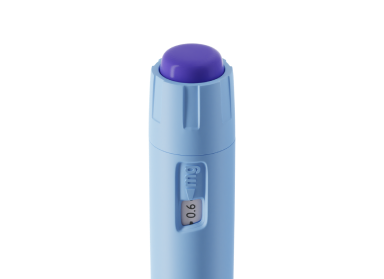
Saxenda
Currently in shortage
In shortage🔴
6 mg/1 mL
In shortage. Estimated shortage duration TBD
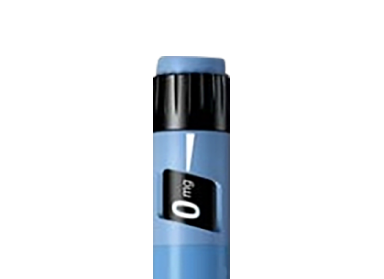
Victoza
Currently in shortage
In shortage🔴
6 mg/1 mL
In shortage. Estimated shortage duration TBD
In shortage🔴
6 mg/1 mL
In shortage. Estimated shortage duration TBD

Trulicity
Shortage resolved
Available🟢
0.75 mg/0.5 mL
Available according to the FDA and we’re receiving no reports of supply issues.
Available🟢
1.5 mg/0.5 mL
Available according to the FDA and we’re receiving no reports of supply issues.
Available😒
3 mg/0.5 mL
⚡ 1 recent report
Shortage resolved according to the FDA but we're receiving reports of supply issues.
Available🟢
4.5 mg/0.5 mL
Available according to the FDA and we’re receiving no reports of supply issues.
Want to get notified when a dose comes off or on the shortage list? Sign up for shortage alerts.
FAQ
What is the GLP-1 Supply Tracker?
The GLP-1 Supply Tracker is an open-access tool to help people find supply during the national GLP-1 drug shortage.
It also provides an easy way to report local shortages to the FDA, so that the FDA has real-time information about what patients are experiencing every single day. This data helps the FDA determine which drugs should be on their official shortage list.
Last but not least, it helps providers stay up to date with automated alerts on the status of GLP-1s on the FDA’s drug shortage list so they can make informed decisions on behalf of their patients when recommending specific treatment plans.
How do supply alerts work?
When someone enters “I can't find GLP-1s,” we save the drug, dose, and zip code to our shortage database. When someone enters “I found GLP-1s,” we save the drug, dose, and address of the pharmacy. We then automatically alert people who requested updates about availability in their area if the drug and dose they need is found within 100 miles of their zip code.
We will send those patients a list of nearby pharmacies with supply along with the pharmacy address and phone number. We will send supply emails up to 2x per day with this information.
We will also include a guide on how to transfer your prescription from one pharmacy to another. We’ve linked that info here as well.
How do I report a shortage to the FDA?
Press “I can’t find GLP-1s” above, it will take you to the shortage form. From there, enter your zip code and the drug and dose that you cannot find. Make sure the “report shortage to the FDA” checkbox is clicked at the bottom and then press submit. We will automatically submit the shortage to the FDA on your behalf.
Why do the colors next to the Drug/Dose combinations mean?
If it is green, it means the drug and dose combination is listed on the FDA’s website as “Available” and we haven’t received any shortage reports for that dose recently.
If it is yellow, it means that the drug/dose combination is listed as “Available” on the FDA’s website but we are receiving reports of supply issues. This means the dose could still be difficult to find at pharmacies.
If it is red, it means that the drug and dose combination is listed in “limited availability” on the FDA’s website and will likely be extremely difficult to find.
What does it mean to sign up for FDA alerts?
We will automatically scan the FDA’s drug shortages website every day. If there is a change in the availability of the drug and dose combinations listed above, we will send you an email that day.
In addition, every Monday we will send you the current version of the list (even if it hasn’t changed).
Who can use the GLP-1 Supply Tracker? Do you need to be a Ro patient?
Anyone, whether or not you are a Ro patient, can contribute to and benefit from alerts delivered by Ro’s GLP-1 Supply Tracker. It is entirely free and open access to any patient, provider, or other healthcare stakeholder who would like to use it.
Why did Ro build this tracker?
Ro’ers built a GLP-1 Supply Tracker to fill the gap that our patients and providers are currently struggling with – finding out which GLP-1s are locally available (and where) and which aren’t. We felt uniquely positioned to combine our supply insights with publicly available information and our in-house expertise building easy-to-use patient tools to increase access to these revolutionary new treatments.
We originally set out to create this tool exclusively for our own patients, but as we built it, we realized that the tool works better for all patients (Ro and non-Ro patients) the greater the number of people that have access to it.
Our hope in building this tracker is to enable patients to:
crowdsource whatever supply is available;
share real-time shortage reports with the FDA;
and enable providers and other stakeholders to stay informed about the latest shortage status and supply in order to best help patients.
We wrote more about why we made this tool here.
Will Ro advertise its own products to me if I share my email?
If you opt into receiving an email from Ro (box checked on submission), we will send you an email if no supply has been found in your area within 7 days. Included in that email will be information about Ro’s GLP-1 offerings, including available options such as compounded semaglutide (with a link to our quality and safety practices).
The goal of the GLP-1 Tracker is to be a free open-access tool for the community. We also want to make sure that patients are aware of all options if they are stressed about missing a dose or want to learn more about their options.
We hope an extra email (albeit potentially annoying!) helps some people who might not be able to find supply. If you’ve already found supply, feel free to ignore the email :)
As always, we’re open to feedback: [email protected].
How often is the tracker updated?
The tracker is updated in real-time throughout the day, automatically, so that patients, providers, and other healthcare stakeholders get the latest insights about what patients are actually experiencing across the country.
Where does Ro get the data for the supply tracker? Is it all crowd-sourced?
The tracker is updated in real-time throughout the day with the latest data from the FDA’s drug shortage website, Ro’s own nationwide supply data, and user-generated data by location.
Any patient (even if they’re not a Ro patient) can pay it forward and share where they found supply – entering the specific pharmacy, drug, and dose they found.
When supply is found, we email patients who request alerts about nearby supply with the pharmacy, address, and phone number so they can call and ask the pharmacy to transfer their prescription from their current pharmacy.
Our goal is to share and promote this tracker widely in order to collect a significant number of ongoing, user-generated reports from patients, who want to contribute to a community resource that they and their fellow patients can rely on to help find GLP-1s.
Does Ro have any proprietary supply data? Where is it from?
Yes, we include our own nationwide supply insights generated when Ro patients log that they picked up their medication at a pharmacy. This means Ro’s nationwide patient population, just by going about their own care journeys, contributes to supply insights that help each other more effectively find their medication.
Is Ro sharing supply reports with the FDA?
Yes, each person who reports a shortage to the tracker can easily check a box to opt-into automatically share that information with the FDA. We believe that the ease of use of our tracker and the value that it offers patients, providers, and other stakeholders will encourage a greater volume of real-time reporting to the FDA.